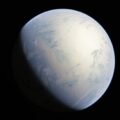Senators Chuck Schumer (D-NY) and Mike Rounds (R-SD) are putting forth an amendment to the National Defense Authorization Act that would mandate government records related to Unidentified Anomalous Phenomena (UAP) carry the presumption of disclosure.
“Our goal is to assure credibility with regard to any investigation or record keeping of materials associated with UAP,” said Senator Rounds in a statement.
“For decades, many Americans have been fascinated by objects mysterious and unexplained, and it’s long past time they get some answers,” the US Senate Majority Leader, Chuck Schumer, stated last week.
“The American public has a right to learn about technologies of unknown origins, non-human intelligence, and unexplainable phenomena. We are not only working to declassify what the government has previously learned about these phenomena but to create a pipeline for future research to be made public,” he added.
The goal of the legislation Schumer and other Senators are backing resonates with the scientific mission of the Galileo Project that I am leading. Last month, our expedition to the Pacific Ocean retrieved spherules from the site of the first recognized interstellar meteor, IM1. We plan to study the nature of these spherules since IM1 was faster than 95% of the nearby stars relative to the local standard of the rest of the Milky Way and had material strength higher than all meteorites in the CNEOS catalog compiled by NASA over the past decade. These are anomalous properties relative to solar system rocks. Hence, our study provides the scientific counterpart to the sentiments expressed by Senators Schumer and Rounds.
The mainstream astronomical search for extraterrestrial life focuses on the telltale signatures of primitive forms of life because microbes emerged soon after the Earth cooled, whereas humans emerged merely in the last 0.1% of Earth’s history. But we now know that most stars in the Milky Way galaxy formed billions of years before the Sun, and the billions of habitable planets around them are well ahead of the history of life on Earth.
Humanity launched multiple probes toward interstellar space over the short span of our space age. This implies that technological space trash from past civilizations may be abundant in interstellar space, as much as plastics are in our oceans. Any technological debris launched by chemical propulsion is bound by gravity to the Milky Way disk and must have accumulated over the past billions of years.
If we search our cosmic backyard, we might find technologically-manufactured objects from our cosmic neighborhood, akin to tennis balls thrown by a neighbor. The first three interstellar objects recognized by humans: the interstellar meteors IM1 and IM2, and `Oumuamua, were anomalous in material strength, speed, shape, and kinematics relative to familiar asteroids and comets.
The day job of members of the US Department of Defense and National Intelligence is to monitor the sky for national security risks. As a result, they are likely to be the first to notice UAP. If any UAP is a functional device of extraterrestrial origin, it would likely be far more advanced than our technological products because the senders reached our doorstep before we reached theirs. In that case, the decoding of its functions will be accompanied by a sense of awe, akin to Moses reading the Ten Commandments on a tablet linked to WiFi at Mount Sinai a few thousand years ago.
As a scientist, I view the discovery of extraterrestrial technologies as an opportunity to make a giant leap toward our technological future. As discussed in my new book, Interstellar, such a discovery could inspire humanity to explore space in new ways. In the past seventy years, we searched for radio signals, similar to waiting for a phone call. In order for that search to be successful, one needs the counterpart to be active at the proper time. However, physical objects could be found at our doorstep even if their senders are dead. Such objects may remain in the Milky Way over time, whereas radio signals are billions of light years away if they were sent billions of years ago.
What lies outside the solar system could be very different than what we find inside. We know that 83% of the matter in the Universe is composed of a substance that we do not find in the solar system. As a result, we invest billions of dollars in the search for this mysterious dark matter. However, the public cares more about the question: “Are we alone?” than about the nature of dark matter.
Therefore, society should invest similar resources, or even more, in the search for interstellar objects of technological origin. Science can be exciting if it resonates with the interests of the government and the public.
Avi Loeb is the head of the Galileo Project, founding director of Harvard University’s – Black Hole Initiative, director of the Institute for Theory and Computation at the Harvard-Smithsonian Center for Astrophysics, and the former chair of the astronomy department at Harvard University (2011-2020). He chairs the advisory board for the Breakthrough Starshot project, and is a former member of the President’s Council of Advisors on Science and Technology and a former chair of the Board on Physics and Astronomy of the National Academies. He is the bestselling author of “Extraterrestrial: The First Sign of Intelligent Life Beyond Earth” and a co-author of the textbook “Life in the Cosmos”, both published in 2021. His new book, titled “Interstellar”, is scheduled for publication in August 2023.

